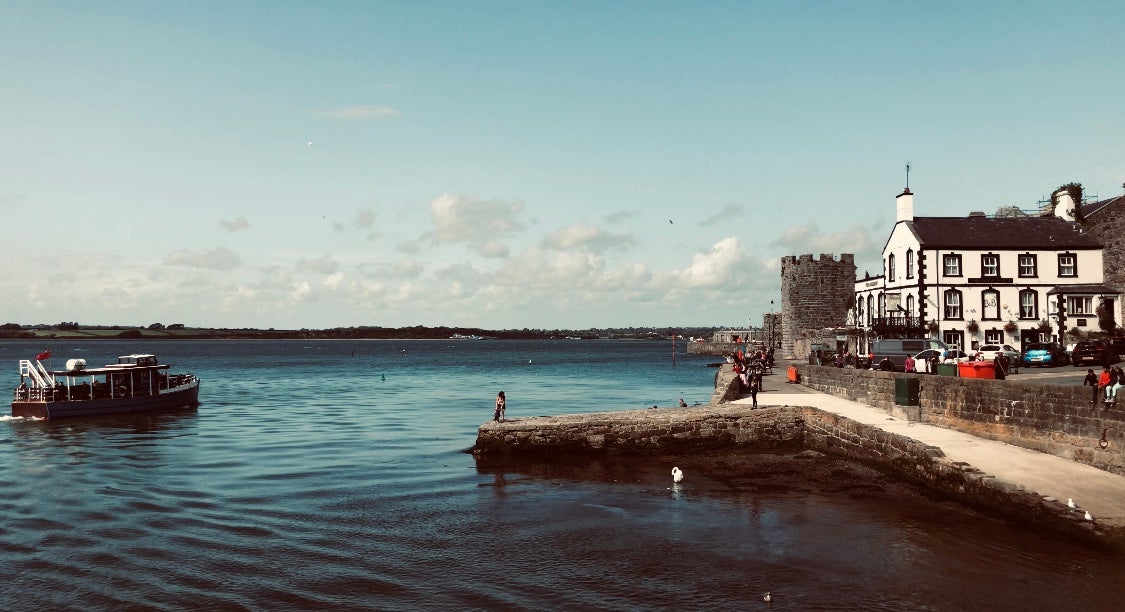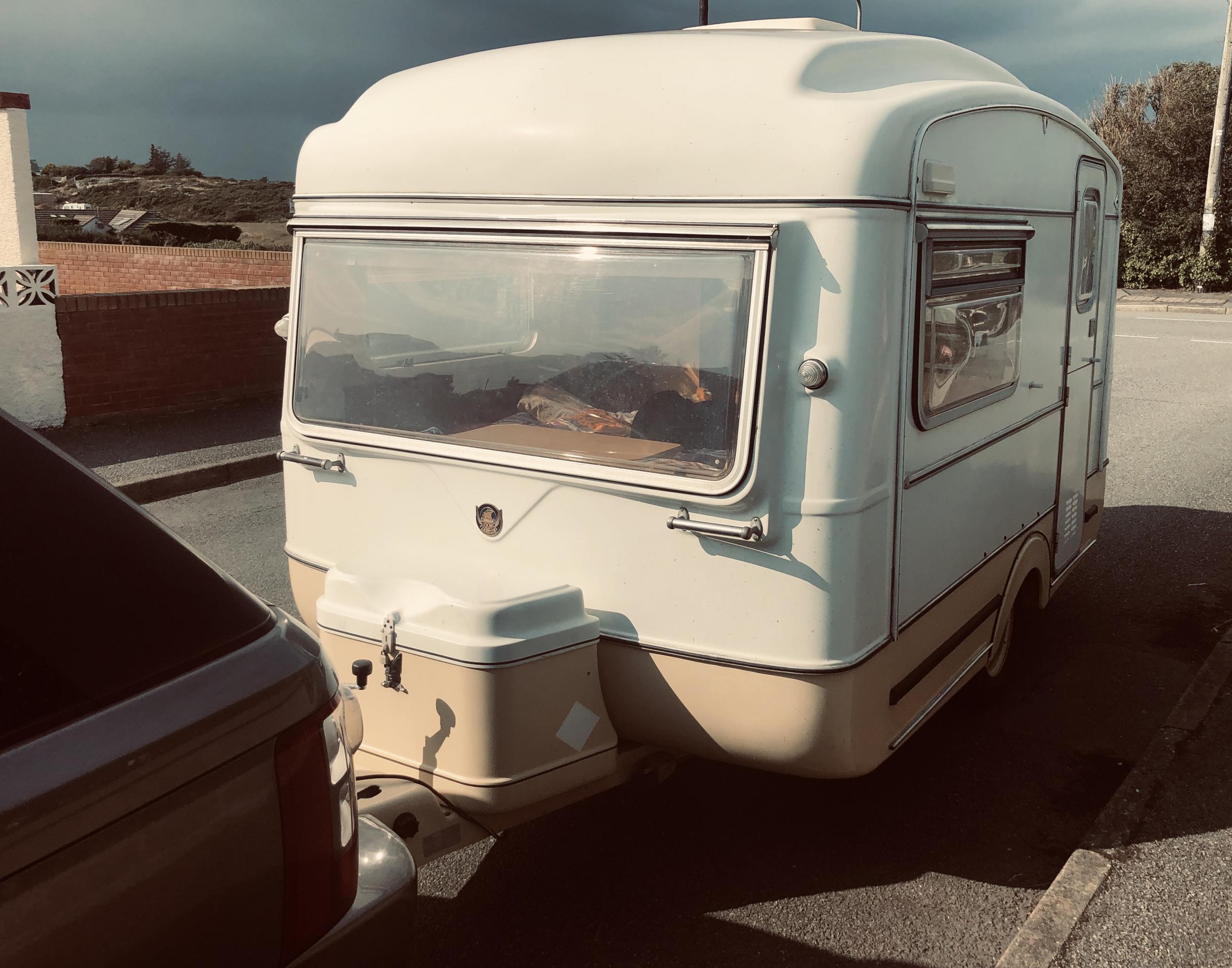From Cardiff to Holyhead: A race against Wales' longest train route
Seven adventures in seven days, part two: from south to north Wales

Your support helps us to tell the story
From reproductive rights to climate change to Big Tech, The Independent is on the ground when the story is developing. Whether it's investigating the financials of Elon Musk's pro-Trump PAC or producing our latest documentary, 'The A Word', which shines a light on the American women fighting for reproductive rights, we know how important it is to parse out the facts from the messaging.
At such a critical moment in US history, we need reporters on the ground. Your donation allows us to keep sending journalists to speak to both sides of the story.
The Independent is trusted by Americans across the entire political spectrum. And unlike many other quality news outlets, we choose not to lock Americans out of our reporting and analysis with paywalls. We believe quality journalism should be available to everyone, paid for by those who can afford it.
Your support makes all the difference.Our travel correspondent is making the most of the UK in August by taking on a challenge a day, and hopes that you might follow.
Today: hitchhiking from Cardiff Central to Holyhead the pretty and unpredictable way in a race against Wales’ longest train journey
Caravans: yesterday, they tainted the sinuous beauty of the A470.
If you do not yet know this magnificent trunk road, it is the closest there is to a Pan-Wales Highway. The A470 emerges from the congestion of Cardiff and the Valleys to challenge the contours of increasingly muscular mountains, swerving and swooping as it links towns and villages blessed – or cursed – by the exhilarating geography of Wales.
But the consequence of making natural beauty accessible? Tourism. Most of it is benign. But for caravanners, immersion in some of Britain’s finest scenery seems to involve dragging around hundreds of cubic feet of fixtures, fittings and fresh air, all contained in a box on wheels.

Such peripatetic paraphernalia might be suitable on an eight-lane interstate in Arizona. But in mid-Wales when two caravans with a combined width slightly greater than a particularly narrow stretch of the A470 converge, life on the road gets slow and messy,
Normally, the hitchhiker takes it all in his or her chauffeur-driven stride. But yesterday I was a man with a mission, which did not allow for towing-related snarl-ups. My Monday adventure was a race against the train.
At 7.21am, the first end-to-end train across Wales departs Cardiff Central, destination Holyhead. I was there to wave it off. Wales’s answer to the Trans-Siberian is the longest train ride in the country, and takes an average of five hours.
Because of the way that the web of railways in Wales was reduced to a skeleton in the Sixties, the 7.21am takes a preposterously long route – I calculate almost 250 miles, compared with under 200 miles for the most direct road journey, using the A470.
The train is ignominiously obliged to visit England twice, meandering through parts of Herefordshire, Shropshire and Cheshire. So even allowing for time spent by the roadside, I started the day with the belief I was in with a chance of reaching the western tip of Anglesey faster than the train.
When you are thumbing, belief is worth nothing. You rely entirely on the kindness of strangers, and have absolutely no control over your destiny (or, often, your destination). But you can try to boost your chances.
Rule one: invest to get clear of cities. Five minutes after I waved off the Trans-Wales Express, I hopped aboard a train, too. But unlike the train from Cardiff to Holyhead, the walk-up fare for the 7.26am to Merthyr Tydfil isn’t £93. It’s just £6 for a 25-mile flying start.
Merthyr Tydfil’s forlorn single platform, lost amidst a shopping centre, was not always the end of the line. On the way up to the junction of the Heads of the Valleys road and the A470, you pass a grand sweep of viaduct that has been bereft of trains for half a century.
You pass it very quickly too, if you happen to be in a fast, comfortable car. Many drivers understandably regard their vehicle as their cocoon, providing splendid isolation from the world. Why would you ever let a complete stranger intrude?
After decades of hitching I am still amazed that anyone stops. The motorist has a split-second to recognise that, even in 2019, someone is actually hitchhiking; decide if the person thumbing would make a pleasant companion or turn out to have personal hygiene issues and/or be an axe-murderer; and if they are deemed by the instantaneous evaluation to be worth helping, is there somewhere to stop safely without a 38-tonne truck intervening unhelpfully?

I ticked none of the right boxes for the drivers during a 20-minute wait at an increasingly annoying roundabout. But then Mr Mercedes (he can be known only by that name for employment-contract reasons) pulled up.
Mr M had been expecting me to be there, because a quarter-hour earlier he had driven past in the opposite direction and evidently was unimpressed by my technique. As he raced through the Brecon Beacons (caravanners are evidently not early starters), we talked of his cheeky and astonishingly successful self-upgrade on a Virgin Atlantic flight – another good reason to remain anonymous.
At Brecon I had rather too long to muse that, by now, the passengers on the 7.21 were meandering through Shropshire at about 60mph. I was doing precisely 0mph, until John and Sally stopped in their Jaguar (yes!).
They traded a lift through achingly beautiful landscapes for a rapid-fire series of answers to their travel questions.
Ideal location for a family meet with four people from Sydney and four from London? Vancouver. Best airline to Australia from Gatwick? Qatar Airways assuming an Airbus A350 is on offer, otherwise Emirates’ all-A380 schedule. Optimum stretch of the Camino de Santiago? The one-day hike across the Pyrenees from St-Jean-Pied-de-Port in France to Roncesvalles in Spain.

From where Sally and John deposited me in Dolgellau, Graham and Chris picked up the hitcher, and the theme. Chris doesn’t enjoy flying, and they have set a 2h30m maximum on flights. Faro in Portugal suits them just fine. Anywhere else? Stretch it to three-and-a-bit hours, and Corfu and Malta come into play.
Chatting about Mediterranean islands while watching the sun and showers jostle amidst the mountains felt surreal. We brushed against the sea, at around the same time as the rail passengers were sweeping at 90mph around Colwyn Bay – the best coastal stretch of the Cardiff-to-Holyhead train.
After Porthmadog, where Kyle and Emily took over the northward task, I felt downright uncomfortable. But that was understandable. They are visiting from the Australian state of Victoria, and had crammed a month’s worth of excess baggage into the smallest rental car in Christendom. I was squeezed into the back seat, which I shared with a case the size of a small caravan, and then they somehow compressed my luggage to fit the remaining space between my lap and the roof.
Emily is a nurse. Kyle is a youth worker. They drive distances that would terrify you and I. On Tuesday morning they propose to climb Snowdon, then drive to Stirling in the afternoon. I thought I had mis-heard. Not the one in Scotland, surely? It was.
Monday afternoon, though, was to be devoted to Caernarfon Castle. By now the 7.21am northbound Trans-Wales Express had become the 2.36pm southbound. And so I allowed myself the luxury that hitchhikers all too often deny themselves: exploring the places along the way.
The world can sometimes resemble a sequence of roundabouts, truck-stops and lay-bys rather than a rich and rewarding collection of communities. So I made the most of Caernarfon, a town that waves across the waves of the Menai Strait at Anglesey, before what turned out to be the final lift.
Jane was driving a Range Rover, making this an exceptional day for top-of-the-range cars. She was listening to House music at a volume sufficient to entertain me and the two terriers, Barbara and Tim, in the back.
For the last 30 miles of an enriching day, I learned about her career in the music business, the benefits of employing teachers with different life experiences and the joy of the open road – with a 1980 Viking Fibreline in tow.
By the time I reached Holyhead I was four hours behind schedule. And I didn’t care. At the end of a long and splendid day on the road, for the first time in my long hitching career, I had been picked up by someone towing a caravan.
Humanity: marvellous.
Join our commenting forum
Join thought-provoking conversations, follow other Independent readers and see their replies
Comments